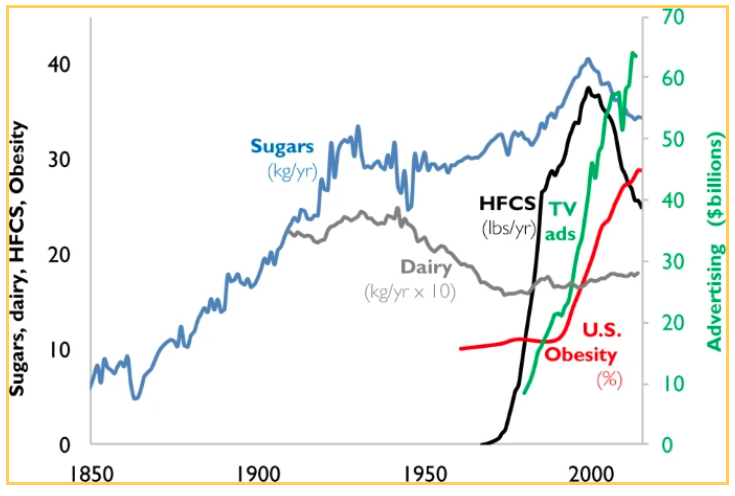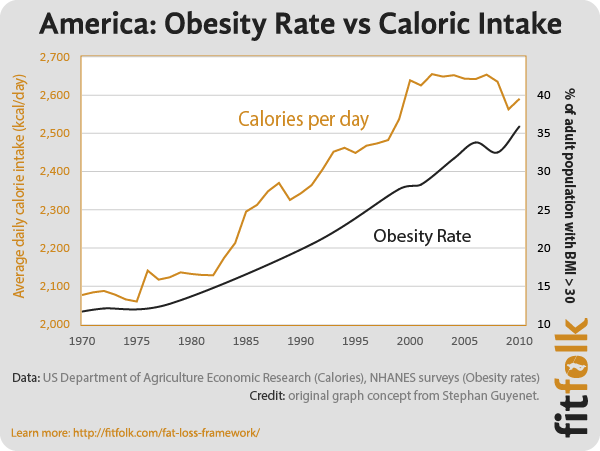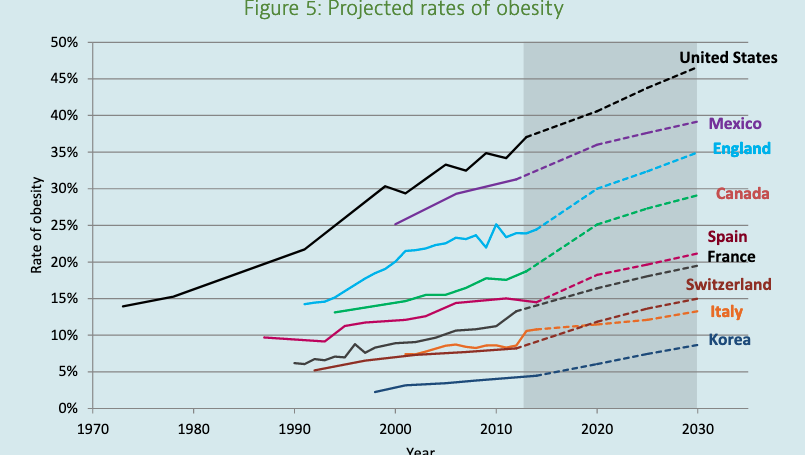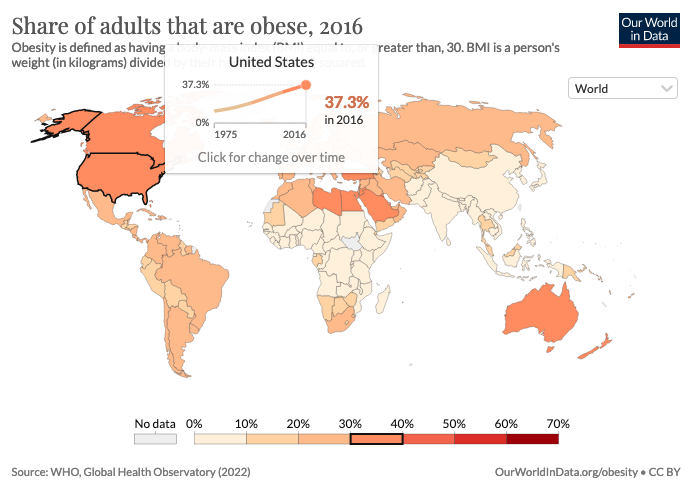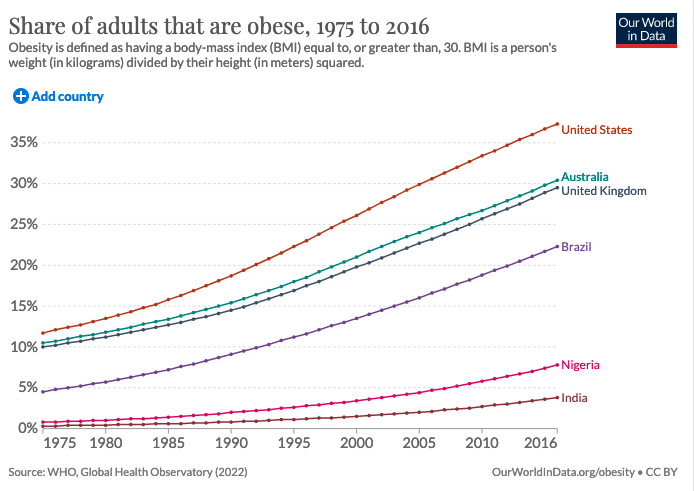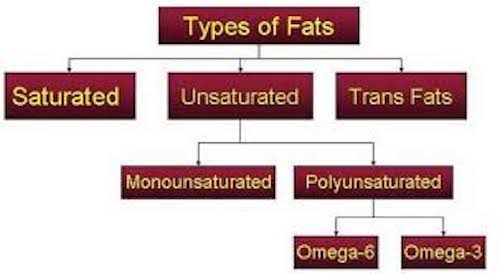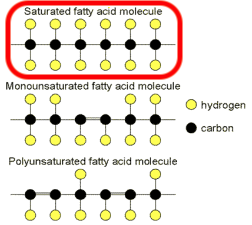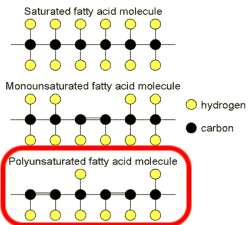Saturated Fats vs Unsaturated Fats for Longevity, Part 2
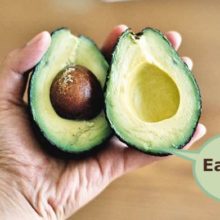
The saturated fats vs unsaturated fats debate have proponents on each side, but the evidence clearly supports that unsaturated fats are superior, if consumed in moderation; especially if you focus on one particular polyunsaturated fat that might help you lose body fat and get healthier to boot.
"Saturated fats vs unsaturated fats" is one of more than 30 lessons from the upcoming online video course that will show you how to reduce your biological age. Subscribe to the Newsletter to be notified when it's released.
Saturated fats vs unsaturated fats is Part 2 of a three-part series that examines the best macronutrients for you to eat for healthy longevity:
- Part 1 is about simple vs complex carbs,
- Part 2, this post, is about saturated fats vs unsaturated fats, and
- Part 3 is about plant protein vs animal protein (forthcoming).
Before we deal with dietary fat — the fat you eat — let’s first address body fat.
This is fat, body fat:
And all this is fat, dietary fat:
If you eat more calories from fat than you use, you get this, just as you do by eating more calories from carbs than you use:
Same with protein. Although your body doesn’t store protein like it does with fat and carbs, if you consume more calories from protein than you use, it gets converted to carbohydrate or fat.
This is not to say that the calories in/calories out model is unassailable. The hormonal effect of the foods you eat can determine how calories are utilized by the body depending on their food source. So, for instance, calories from fructose can promote insulin resistance.
You can think of it this way: If you consistently ingest, say, 300 calories of fructose per day, from a metabolic perspective these fructose calories will have a greater fat-accumulating impact on your body than if the 300 calories came from consuming 300 calories of spinach.
Your source of calories matters, but having said that, the calories in/calories out model is generally accurate, and that means that if you want to lose weight, you need to be in a caloric deficit — less calories consumed, more calories used.
OK, that was a side note; let’s talk more about body fat, and then address dietary fat, the kind you should avoid and the kind you should eat.
Body Fat: Nearly every body’s got too much
In the early 1970s, everyone thought that eating dietary fat makes you fat, and so food manufacturers made everything low fat and nonfat. Fat got sucked out of many processed foods, and was replaced by various sugars, such as fructose corn syrup.
Everybody got fatter.
This graph shows a timeline of the increase in contribution of refined sugar and high fructose corn syrup (HFCS) to U.S. diet, together with the increase in U.S. obesity rate:
Notice that although the consumption of sugar kept growing since the mid 18th century, it wasn’t until around 1970 that HFCS, TV ads for processed foods, and — correlated with that — obesity all skyrocketed.
The graph comes from a 2018 study Recent origin and evolution of obesity-income correlation across the United States. The researchers point out that:
“The metabolic effects of HFCS include complications of glucose metabolism, lipid profile and insulin resistance, [which are] driver[s] of obesity and diabetes epidemics…”
Although HFCS is sugar, and hence a carbohydrate, it clearly will promote body fat if eaten regularly.
Studies show that high fructose corn syrup increases your appetite and it promotes obesity more than regular sugar. Functional medicine expert Dr. Mark Hyman says:
High fructose corn syrup also contributes to diabetes, inflammation, high triglycerides, and something we call non-alcoholic fatty liver disease
HFCS and trans fats (partially hydrogenated oils) have an oversized deleterious impact on health and body weight, because your body has an exaggerated response to the calories consumed from these “foods” given their hormonal impact.
But, of course, calories do matter.
This next graph clearly shows the correlation between obesity and caloric intake in the USA, clearly demonstrating that calories matter:
You can see that calories jumped after 1975 about the time that so many processed foods and drinks, like soda, got pumped up with high fructose corn syrup, and advertisers began their campaigns to create demand for manufactured foods.
These two charts clearly indicate that both the amount of calories consumed from the 1970s on, as well as the food sources of those calories that contained lots of high fructose corn syrup strongly contributed to a society that is overfat.
Then about a decade ago, it all reversed and fat was in. The high-fat Keto Diet became the rage. But replacing processed carbs with fat didn’t make people thinner. People are still getting fat, as shown by this report from the Organization for Economic Co-operation and Development.
This graph on page 8 of that report shows a sampling of the many countries that currently have high rates of obesity that are expected to climb:
At this point, it would be helpful to define just what is considered being overweight and obese:
Overweight is defined as a BMI between 25.0 and 29.9; and a BMI of 30 or higher is considered obese.
Check out the following interactive BMI maps put together by the data aggregator, Our World In Data.
The first map below uses color to designate each country’s percentage level of obese people, the darkest being the highest level, and the lightest being the lowest level.
I put my cursor on the United States to get the pop-up shown below that provides the obesity stats for that country. Yes, in 2016 37% of American adults were obese. According to the CDC, the US obesity prevalence was 41.9% from 2017 thru March 2020, and 73.6% were overweight.
Many countries aren’t doing much better than the USA. The graph below shows how the obesity rates for a few select countries have been climbing. Note that in 1975 — again, before high fructose corn syrup (HFCS), TV ads became ubiquitous — most countries cited had obesity rates at 10% or below.
If you’ve read my post How Much Should You Weigh? Calculate Your Ideal Body Weight you know, BMI (Body Mass Index) is not the best way to measure excess body weight, but unless you have more muscle than the average person, or are exceptionally tall or short, it’s pretty accurate. And that’s why the data I’ve shown you underscores that much of the world’s population is in trouble: People who are obese tend to have shorter healthspans; meaning they get chronically ill earlier in life than their thinner counterparts, and die earlier. (See this and this.)
So, your takeaway from this is that carbs are not the enemy, nor is dietary fat. The enemy is processed foods (see Part 1) that are laden with unhealthy sugars, like HFCS, and the unhealthy fats we eat too much of, particularly given their caloric density of nine calories per gram versus four calories per gram of protein or carbohydrates.
If you want the details about just how bad processed foods are to your health, read Part 1. And then gradually take processed foods off your plate.
Dietary Fat: Nearly everybody eats too much of the wrong kind
As was covered in Part 1 of this three-part series, complex carbs are healthy and necessary. And so is dietary fat… but it has to be the right kind of fat.
I’m going to tell you what you need to know about the dietary fat in the saturated fats vs unsaturated fats debate.
These are the types of fat:
Let’s begin with the most ugly of them all, trans fats.
Trans fats
Don’t eat trans fats, which pretty much means, don’t eat ultra-processed food.
Trans fats are manufactured. They are the product of a process that adds hydrogen to liquid vegetable oils to make them more solid. Another name for trans fats is partially hydrogenated oils.
Trans fats have damaging health effects. They raise levels of LDL (the so-called bad cholesterol) and lower levels of HDL (the so-called good cholesterol). High LDL combined with low HDL increases the risk of heart disease, stroke, and type 2 diabetes.
The World Health Organization (WHO) estimates that trans fats are linked with 500,000 cardiovascular deaths each year.
Trans fats became popular when food companies found them easy to use, cheap to produce, and extended the shelf life of food.
The WHO has called on governments to eliminate trans fats from the global food supply. Most commercial food production companies have now eliminated trans fats from their products.
Sources of trans fats can include:
- Fried foods, such as french fries
- Doughnuts, pies, pastries, biscuits, and other baked goods
- Pizza dough, cookies, and crackers
- Stick margarines and shortenings
- Packaged foods
- Fast foods
If any ingredient list on food packaging includes “partially hydrogenated oils,” it means that the product contains trans fats.
If your palate demands that you consume foods containing trans fats, abide by the American Health Associations’ recommendation that you do not consume more than 5 to 6% of your total caloric intake, even though any amount of these fats increases health risks, so I say, eat zero percent of it.
Next up is saturated and unsaturated fats. Let me begin by saying, beware the confusion I’m about to unleash upon you, because like so much about nutrition the story about healthy vs unhealthy fats is rife with contradiction.
Saturated Fats
Saturated fats are solid at room temperature, and are sometimes called “solid fats”. The basic carbon structure of these fatty acids is “saturated” with hydrogen atoms.
Some sources of saturated fat include:
- Animal meats and meat products
- Dairy products, except those that are fat-free
- Processed foods, including baked goods, snack foods, and french fries
- Some vegetable oils, including coconut oil, palm oil, and cocoa butter
The long-standing view about saturated fats is that they increase health risks if a person consumes too much over a long period. The story goes on to say that a high intake of saturated fat may eventually raise levels of LDL, which in turn increases the risk of cardiovascular disease and stroke.
The American Heart Association recommends that you eat no more than 13 grams of saturated fat per day (or 120 calories), but less is better.
That said, a meta review of the literature published in 2019 in the journal Nutrition Reviews finds that:
“… saturated fat intake is not independently associated with the incidence of heart disease and that replacement of saturated fats with polyunsaturated fats may not be beneficial despite reducing total- and low-density lipoprotein cholesterol… The clinical trials used by the American Heart Association’s Advisory to uphold their 1961 recommendation to reduce saturated fats and replace it with polyunsaturated fats are plagued by design flaws, lacked dietary control of variables other than fat, and did not account for trans-fat restriction in the high-polyunsaturated groups, this implying that the saturated fat eating groups in the studies also ate trans fat; whereas those in the polyunsaturated groups did not”.
The arm-wrestling about how awful saturated fats are, or are not, continues. My recommendation is that until this debate is settled, minimize the consumption of saturated fats. I’m pretty sure your cardiologist would agree with that, and, after all, you have other options, such as unsaturated fats.
Unsaturated fats
Now we’re getting to what is commonly designated as healthy fats; of course, if eaten in moderation. As mentioned, at 9 calories per gram, all fats contain more calories than carbs and protein, which each contain 4 calories per gram. So, it’s wise to eat less dietary fat than carbs and protein.
Unsaturated fats are liquid at room temperature, and they mostly come from plant oils. You want to eat much more unsaturated than saturated fat.
The two main types of unsaturated fat are: monounsaturated fats and polyunsaturated fats.
Monounsaturated fats
Monounsaturated fat molecules are not saturated with hydrogen atoms — each fat molecule has bonded with one hydrogen atom.
Sources of monounsaturated fats include:
- Olives and olive oil
- Nuts and nut butters
- Avocados
Monounsaturated fats may lower LDL, or “bad,” cholesterol levels, and maintain healthful levels of “good” high-density lipoprotein (HDL) cholesterol.
Many health professionals report that a diet rich in monounsaturated fats may also reduce a person’s risk of heart disease, our number one killer. The Mediterranean diet, which research suggests may reduce the risk of chronic disease, contains plenty of monounsaturated fats.
Polyunsaturated fats
Polyunsaturated fats have even fewer hydrogen atoms than monounsaturated fats.
Omega-3 and omega 6 fatty acids are two types of polyunsaturated fats we mostly consume.
You want to eat more 3s and less 6s. The problem is that we eat a lot more 6s than 3s.
As this study confirms:
“Anthropological and epidemiological studies and studies at the molecular level indicate that human beings evolved on a diet with a ratio of omega-6 to omega-3 essential fatty acids at a ratio of approximately one-to-one; whereas in Western diets the ratio is from 15 to 16-to-one. A high omega-6/omega-3 ratio promotes the pathogenesis (meaning how a disease develops) of many diseases, including cardiovascular disease, cancer, osteoporosis, and inflammatory and autoimmune diseases, whereas increased levels of omega-3 polyunsaturated fatty acids (a lower omega-6/omega-3 ratio), exert suppressive effects.”
Both omega 3 and 6 are found in the same foods in varying amounts, so the best way to bump up your consumption of 3s, while limiting your 6s, is to dispense with the foods that contain the most 6s relative to 3s, and eat more of the foods with 3s.
Therefore: Eat more omega-3, less omega-6.
Omega-6 fatty acids are associated with increased inflammation, and low-grade, chronic inflammation can accelerate aging. So, avoid the foods that have a lot of omega 6s in them, such as:
- Most vegetable oils, including sunflower, corn, and canola oils
- Meats, such as chicken, pork, and beef (although grass-fed beef can be a source of omega-3s)
- Fried foods
Omega-3 fatty acids are associated with decreased inflammation. Also, they help keep the heart healthy by lowering blood cholesterol levels, reduce triglycerides in the blood, and improve brain, joint, and eye health.
Omega-3 fatty acids are found in:
- Salmon, mackerel, herring
- Walnuts, pistachios
- Seeds, such as flax, hemp, pumpkin and chia
- Vegetables, such as avocado, Brussel sprouts, spinach
I encourage you to get more of your daily fats from walnuts, seeds and avocado.
Walnuts have the most omega-3-fatty acids among nuts, but do eat other nuts, such as pistachios and almonds.
I’m nuts about nuts, and for good reason. Nuts are great sources of fiber, protein and polyunsaturated and monounsaturated fats. And they help keep you healthy:
This paper was a meta-analysis of 18 studies indicates that nut intake is inversely associated with heart disease, meaning more nuts, less heart disease.
This study concluded:
“Nut consumption was associated with decreased overall and cardiovascular disease mortality across different ethnic groups and among individuals from low socioeconomic status groups.”
This study concluded:
“Our meta-analysis indicates that nut intake is inversely associated with IHD [ischemic heart disease], overall CVD [cardiovascular disease], and all-cause mortality but not significantly associated with diabetes and stroke… These findings support recommendations to include nuts as part of a healthy dietary pattern for the prevention of chronic diseases.”
So, eat some nuts, but be aware that at 9 calories per gram, they are high in calories. A handful per day is enough.
When it comes to dietary fat, remember this:
- Never eat trans fat
- Eat saturated fat sparingly
- Make unsaturated fat your main source of dietary fat
- Try to eat more omega-3 fatty acids than other sources of dietary fat
If you stop eating processed foods and eat much more omega-3 fatty acids, your body fat will gradually melt away.
Your Saturated Fats vs Unsaturated Fats Takeaway
Remember these five things:
- Most Americans and those in peer countries are overweight, and nearly half of us are obese. That’s a wake up call to do something.
- Although it’s unhelpful that most of us are physically inactive, excess calories are largely responsible for a precipitous weight gain that pretty much began in the mid 70s. This was coincident with the advent of a huge increase in the consumption of high fructose corn syrup and trans fats (partially hydrogenated oils) that are ubiquitous in the processed foods that were unrelentingly advertised to us, and still are.
- If you eat more calories than you expend through metabolism, you will get fatter. And if those calories are from processed foods that have excessive unhealthy fats and simple carbs, you may get fatter still, given the hormonal impact of such foods.
- As encouraged in Part 1, eat complex carbs.
- As encouraged in this post, eat more omega-3 foods and much, much less processed foods.
Questions, comments? Scroll down to the Comments section below and have at it.
Last Updated on July 7, 2023 by Joe Garma




